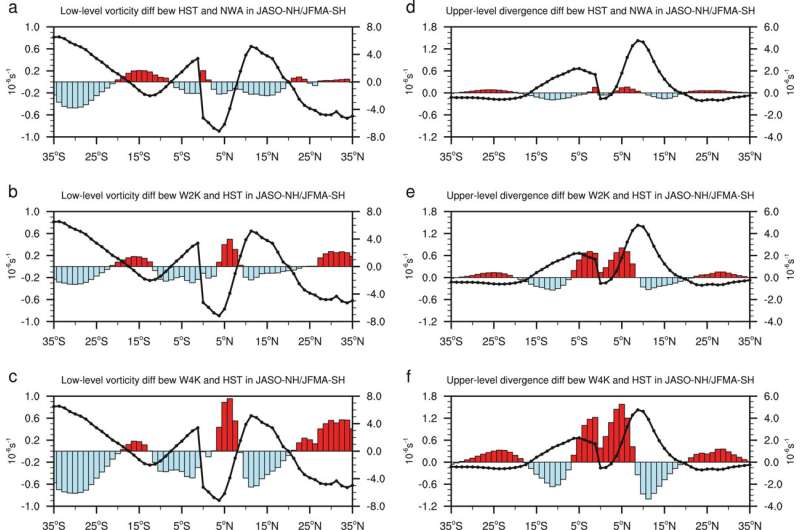This article has been reviewed according to Science X's editorial process and policies. Editors have highlighted the following attributes while ensuring the content's credibility:
fact-checked
trusted source
proofread
Tropical cyclone genesis projected to move toward the poles

In a recent study published in Geophysical Research Letters, researchers unveil a poleward shift of tropical cyclone (TC) genesis on a global scale as a result of climate change. Led by Dr. Xi Cao from the Institute of Atmospheric Physics, the research team collaborated with experts from institutions including the University of Tokyo, Zhejiang University, Yunnan University, the National Climate Center, and the University of New South Wales.
The impact of climate change on TC activity has been a subject of widespread concern due to the potential for disasters such as gales, heavy rain, and storm surges, leading to economic losses and casualties in coastal regions worldwide. However, the lack of consensus on changes in the frequency and location of TC genesis under global warming has created uncertainty in assessing the comprehensive impact of climate change on TC activities.
While climate models have previously projected a decrease in TC genesis frequency in future warming, the global nature of the latitudinal change in TC genesis has remained uncertain.
The research team utilized d4PDF simulations, known as the database for policy decision-making for future climate changes, to reveal a robust poleward shift of TC genesis during active seasons in both hemispheres, with the rate of TC genesis decreasing within latitudes equatorward of 15° and increasing poleward of 15° in each basin.
The projected shift is attributed to the weakening of the Hadley circulation, driven by increased upper tropospheric warming. The study estimates that the signal of TC genesis is expected to emerge over high latitudes of the Arabian Sea, South Atlantic, and South Pacific Oceans at 2 K warming, with implications for assessing the reliability of future TC-related changes in climate models and estimating increased TC-related hazards at higher latitudes under global warming.
"Our research underscores the dynamic nature of tropical cyclone genesis, revealing a significant shift towards the poles." Dr. Cao, the first and corresponding author, explains the teams' finding, "This emphasizes the critical connection between climate change and the evolving patterns of these weather phenomena."
More information: Xi Cao et al, The Projected Poleward Shift of Tropical Cyclogenesis at a Global Scale Under Climate Change in MRI‐AGCM3.2H, Geophysical Research Letters (2024). DOI: 10.1029/2023GL107189
Provided by Chinese Academy of Sciences




















